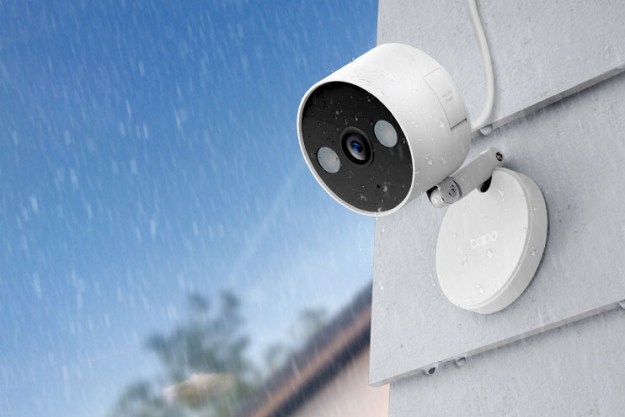
Until recently, I was in a happy long-term relationship with Amazon.
We’ve officially been together for 14 years (I’ve been a customer since 2004) and were pretty much inseparable. We shopped for everything together. From toilet paper, to running shoes, to earbuds, Amazon was there to help me make my choice and deliver the goods.
There was a mutual trust. I needed something, and the “place your order” button was there for me every time. The product reviews were there, too, telling me what was worth buying. I got my toilet paper or earbuds two days later, and if I was unhappy with something, I could send it right back. It was a perfect match.
But recently I’ve learned a few things that have made me question my cozy relationship with the retail giant. We haven’t broken up or anything — yet. But I’m weary. I’ve been exposed to an underbelly I didn’t want to see, and I don’t trust Amazon anymore. I don’t know if I ever will again.
We’re in couples counseling, so to speak, and our future together doesn’t look so good.
Here’s why.
1. Fake reviews are a problem

You know those reviews on Amazon you peruse to determine whether a product will change your life or is a piece of crap? They’re written by people like us, right? People who used the product and wrote an honest review? Wrong. Many of them are fake.
Amazon watchdog ReviewMeta suggests around nine percent of all Amazon reviews could be written by people who were paid to write a review and did not actually use the product. The Washington Post recently found that in some categories, like Bluetooth speakers, more than half of all “customer” reviews are likely fake. Amazon doesn’t deny that fake reviews exist on the site, but it does dispute the numbers, and claims it’s closer to one percent.
Amazon reviews are written by people like us, right? Wrong.
Basically, an army of faux “reviewers” get $3, $5, or $10 to write a fake five-star review on a product — paid by companies hoping to boost sales. Often the reviewers don’t even use the product and are reimbursed for buying it. These “reviewers” can then make an additional profit by returning it to Amazon or selling the item on eBay or elsewhere.
Call me naive, but until I wrote a piece about Amazon clamping down on account holders suspected of being involved in fake reviews, I had no idea this was occurring. Here I was, blindly searching for product knowledge on Amazon’s website, taking it all in as gospel.
While it’s true that nine percent — if that is accurate — is low, it’s still enough to make me question everything I read on the site. Since learning about this, I haven’t stopped shopping on Amazon, but I have been checking elsewhere for product information, something I know I should have been doing all along.
Trusting relationships will make you do silly things.
2. Counterfeit items are everywhere

Find a pair of Adidas kicks on Amazon for $20? Don’t click the buy button, as they’re quite possibly fake. Amazon has thousands of counterfeit items for sale, some of which are labeled as “Fulfilled by Amazon” – Amazon’s stamp of authenticity, if you will.
But advocacy group The Counterfeit Report has found around 58,000 knock-off products for sale on Amazon since May 2016. While that’s a small sliver of the approximate 560 million products available on the site, it’s still troubling. How do you know if you’re getting the actual product that you want?
Companies like Birkenstock have stopped selling items on Amazon altogether.
Ever wonder why you can’t buy certain brands on Amazon? It’s because companies are worried about marketplace sellers peddling knock-offs. In fact, companies like Birkenstock have stopped selling items on Amazon altogether. Apple filed a lawsuit against Amazon to stop unauthorized sellers from hawking items identified on the site as authentic Apple products when they were in fact fake.
While Amazon is taking steps to fight counterfeits and says it will refund you if you accidentally buy one, wouldn’t you just rather not receive a fake item in the first place? I know that I would.
I’ve never received a counterfeit item on Amazon (that I’m aware of, anyway). But the fact that they’re out there waiting for me makes me uncomfortable — and further erodes my confidence in my relationship with the online giant.
3. You could get banned for returning too much stuff

Are you one of those people who orders five different sizes or colors of the same shirt on Amazon, figuring that you’ll send back the four that don’t look as good or fit correctly? You might be in danger of having your account closed.
Recently, Amazon has been shutting down the accounts of people who were returning too much stuff. Some account holders were getting notices that said, “We have closed this account because you have consistently returned a large number of your orders. While we expect the occasional problem with an order, we cannot continue to accept returns at this rate.”
Amazon is largely known for a liberal return policy, so what’s unclear in this new development is what “rate” of returns is unacceptable. Many people whose accounts were closed were reportedly not given a warning that this would happen and were not allowed to open new accounts. It’s possible that the account closures are largely related to the fake reviews problem, as faux reviewers could also be making a tremendous number of returns. Clarity would be nice.
What’s unclear in this new development is what “rate” of returns is unacceptable.
I am not a constant returner, yet this still bothers me. Why? Because unlike other retail establishments, Amazon makes it difficult to simply exchange a product for a different size, color, or brand.
Oftentimes I just want to exchange an item, not return it. But in most cases, Amazon doesn’t offer a clear exchange path. Instead of an “exchange” button on my order summary, there’s only a “return” button. That means that I have to go through the return process, which requires clicking a few buttons, and then going back and tracking down the item on the website again. Then I need to select the right size and click buy. It’s all very clunky, and Amazon counts the whole process as two transactions — a return and purchase — rather than one exchange. Which means that I could be getting dinged for returns when I actually wanted the same item, just in a different color.
Until Amazon gives shoppers a clear avenue to seamlessly exchange items and clarifies its return policy, it shouldn’t be punishing shoppers for excessive returns. Isn’t communication the foundation of a great relationship?
4. Not necessarily the lowest price

I don’t know where we (or maybe it’s just me) got the idea that Amazon is the most affordable place to shop. Maybe at one point, when it was trying to compete with Target and Walmart, it featured low prices. But now, that’s not necessarily the case. How much you pay for something on Amazon can vary widely, and it’s not always the cheapest.
Again, I learned this the hard way recently, when I ordered some chai tea from Amazon, and it showed up in a Walmart box. Perplexed, I did some detective work and realized that a third-party marketplace seller accepted my order, then ordered the same thing for a cheaper price off of Walmart’s website, had it shipped to me, and pocketed the extra money.
While sometimes it’s true that there are good deals to be found on the site (especially during Prime Day), it’s always best to shop around and compare prices. That’s common sense, but again, is something I failed to do in my committed relationship to Amazon. Lesson learned!
Time to move on?
So what does all of this mean for my relationship with Amazon? From prices to reviews, I no longer believe everything that’s featured on the website. I still peruse reviews, but I also double-check information elsewhere.
I haven’t stopped using the website entirely, but like a person who’s been cheated on, I’m afraid to trust again. Knowing what I know now, I doubt I ever will feel the same, unless Amazon changes its ways by dropping the equivalent of its lazy, beer-guzzling friends — fake reviews, unclear return policies, and high prices.
But based on my experience with previous relationships that didn’t end well, I doubt that any real change will happen. In the end, I just might have to find retail love elsewhere.


